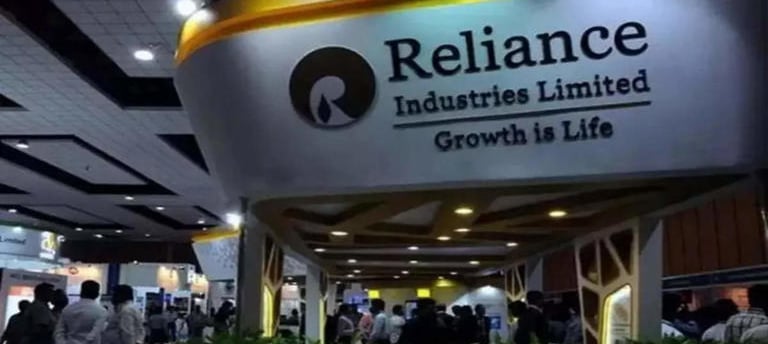Add your promotional text...
Decoding Reliance Industries' Stock Performance: Challenges and Targets Ahead
Synopsis: Reliance Industries Limited (RIL) has faced a 15% decline in its stock price over the past three months. This blog delves into the reasons behind the oil-to-telecom conglomerate’s subdued performance, including challenges in its retail segment, the petrochemical business downcycle, and market dynamics. With Kotak Institutional Equities offering an 8% upside from the current stock price, we explore the prospects for RIL’s recovery and long-term strategy.
TRENDING STOCKS
By Aman Jaiswal
12/2/20242 min read


Reliance Industries: A Closer Look at the Numbers
Reliance Industries Limited (RIL), an iconic player spanning industries like oil, telecom, and retail, has witnessed a turbulent quarter. On Monday, its stock rose marginally by 0.70% to ₹1,301.45. Despite this minor uptick, the shares have tumbled 15% over the past three months. Kotak Institutional Equities’ revised fair price of ₹1,405 indicates a modest 8% potential upside, but challenges remain.
Retail Segment: Slower Growth Amidst Market Shifts
A key factor behind RIL’s underperformance is the weak showing of its retail business, attributed to:
Store Rationalization: Slower pace of new store additions in FY2025 as RIL optimizes its existing network.
Quick Commerce Competition: Rapid market share gains by quick commerce platforms are pressuring Reliance Retail’s revenue growth and margins.
Reduced Valuation Multiples: Kotak has adjusted RIL’s valuation multiple for the retail segment to 28 times EV/Ebitda, aligning with reductions in peer valuations like D-Mart.
Despite the current challenges, Kotak expects an improvement in net area addition in the latter half of FY2025, with normalized growth from FY2026 onwards.
Oil-to-Chemicals (O2C) Segment: Pressures and Prospects
RIL’s O2C business, once a cornerstone of its profitability, has been affected by:
Refining Margins: While there was a sequential improvement in Q2FY2025, margins remain subdued, limiting profitability.
Petchem Downcycle: Persistently low prices and margins in the petrochemical sector, compounded by rising feedstock costs due to recovery in Henry Hub gas prices, have added to the challenges.
Additionally, India’s refining surplus is a double-edged sword. With 44 million metric tons per annum (mmtpa) of new refining capacity under construction and proposals for additional greenfield refineries, private players like RIL face potential reductions in demand for transport fuels from state-run oil marketing companies (OMCs).
Telecom Business: A Mature Market
Reliance’s telecom arm, Jio, has already implemented tariff hikes, leaving limited near-term growth levers. While Jio continues to be a dominant player, the market’s maturation and lack of immediate catalysts contribute to RIL’s sluggish stock performance.
Revised Financial Projections
Kotak Institutional Equities has made several downward revisions:
FY24-27 Revenue and Ebitda Estimates: Reduced by 2-3% for Reliance Retail, reflecting slower store expansions and market competition.
Petchem and Exploration & Production Multiples: Lowered to 4 times EV/Ebitda from 5 times, citing higher feedstock costs and weak pricing.
Emerging Businesses: Nil option value assigned to new ventures like JioMart B2B and jiomart.com, as their scale-up has been limited.
Earnings estimates for FY2026/27 have been trimmed by 1%, driven primarily by retail business pressures.
Navigating the Road Ahead
While the short-term outlook for RIL appears challenging, its diversified business model and strategic pivots hold long-term promise. Here’s what to watch:
Retail Rebound: As store rationalization completes by FY2025, net area additions could provide growth momentum.
Energy Transition: Investments in green energy and reducing dependency on legacy petrochemical businesses could unlock new revenue streams.
Market Expansion: Strengthening Jio’s position in 5G and leveraging its digital ecosystem may drive future telecom growth.
Kotak’s Stock Recommendation
Despite the headwinds, Kotak maintains an “ADD” rating on RIL, reflecting cautious optimism. The revised target price of ₹1,405, down from ₹1,560, suggests room for recovery, albeit modest.
A Period of Transformation
Reliance Industries is navigating a complex phase marked by challenges in retail, subdued O2C performance, and limited telecom growth. However, its commitment to innovation and strategic recalibration positions it for long-term resilience. Investors should keep a close eye on its evolving business strategy while approaching the stock with measured expectations.
Disclaimer:
This article is for informational purposes only and does not constitute investment advice. Always consult a financial advisor before making investment decisions.
